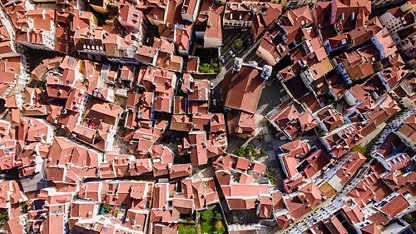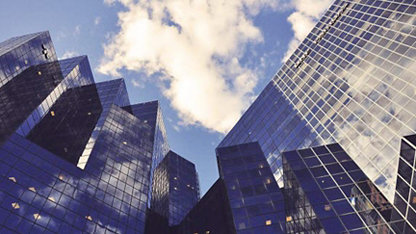Since Covid-19 arrived, the commercial property sector has had to repeatedly adapt and innovate, often at short notice. As well as changing buildings to be safer, more autonomous or allow for flexibility, there has also been a sharper focus on more sustainable, eco-friendly spaces.
The Q3 RICS Facilities Management (FM) Survey results showed that workplace and relocation FM management is expected to see the biggest growth this year. Organisations are looking ahead to see what trends have been accelerated and how these impact future use of, and demand for, buildings. Demand for green and sustainable buildings has risen.
Occupiers and investors are actively looking to be more eco-friendly either in the way a property operates and in the materials used to build it. This has been influenced by the rise of tenants wanting greener spaces with high energy efficiency and minimal damage to the world. Coupled with the impact of Covid-19 and in Europe, Britain's exit from the EU, now appears to be the time to transform tradition.
Encouraging new developments
There is a developing trend of green buildings fetching a higher price premium than non-green buildings. Suggesting that the construction sector is undergoing a global change, projects that are designed both for sustainability and with sustainable materials are in more demand than traditional buildings. More new developments being created in this manner than ever before. The premium that can be charged for eco-friendly property is driving the market.
In the residential sector, green credentials have become something buyers are looking for. In August 2020, Savills released data saying that 49% of people looking to buy felt that green credentials were more important now while a separate survey by Redrow shared that 29% of residential buyers considered energy efficiency the most important feature of a new home. Energy efficiency is also impacting on the commercial market with owners and tenants looking to save on costs whilst also doing this in a greener, sustainable manner. The need for companies to be net zero by 2050 is also a contributing factor to the evolving trend.
The role of the built environment
In 2015, The United Nations General assembly set up 17 global Sustainable Development Goals (SDGs); according to them, they are the "blueprint to achieve a better and more sustainable future". What is the role of the built environment in achieving these goals?
The built environment is fundamental to many themes of the SDGs, and more recently, COP26. The industry is currently responsible for 39% of energy-related CO2 emissions. According to UK Green Building Council, the key to achieving SDGs is to develop a strong profile for the built environment; this points to the needed increase in investments for green and smart properties.
Investing in green buildings such as smart homes and office buildings can help achieve net-zero targets, as they produce far fewer emissions compared to older buildings that are far more energy inefficient. According to the World Green Building Council, properties can also enhance biodiversity, meaning they can save water resources and help fight against deforestation.
The commercial property industry will need to change its way of operating and offset carbon efficiently to achieve net-zero targets. The session "Net-zero carbon targets" at the upcoming commercial property conference will be covering such topics more extensively.
Decarbonising commercial buildings
As of March 2020, "nearly two-thirds of UK homes are still failing to meet long-term energy efficiency targets with the majority of buildings predating modern energy standards” (BBC). The aim for the commercial property industry is thus to prioritise the decarbonisation of buildings to meet the net-zero targets. A key to achieving that is through retrofitting whilst leveraging new technologies to scale such projects.
New technologies utilised in retrofitting projects such as Smart Grids, for example, can gather activity data and allow components and central systems to cross communicate, making buildings more efficient. Other Innovative software like Digital Twin can use sensors to retrieve real-time data to identify inefficiencies within a building by locating inefficiently used energy.
The increased adoption of these innovative technologies can help accelerate the scale of global retrofitting and actively contribute towards achieving both decarbonisation of commercial property and UN SDGs.
For the decarbonisation of buildings, RICS has brought out an innovative new data-led standard, the "International Building Operations Standard" to set the benchmarks of operations to help achieve these net-zero targets. The 'Improving Performance' session in the upcoming commercial property conference will go more in-depth into the standards set out.
Green buildings will become the future of our landscape. With the demand rising for eco-building, retrofitting, and the new innovative technologies that support it, it is vital to keep up with the industry standards and updated information available.











